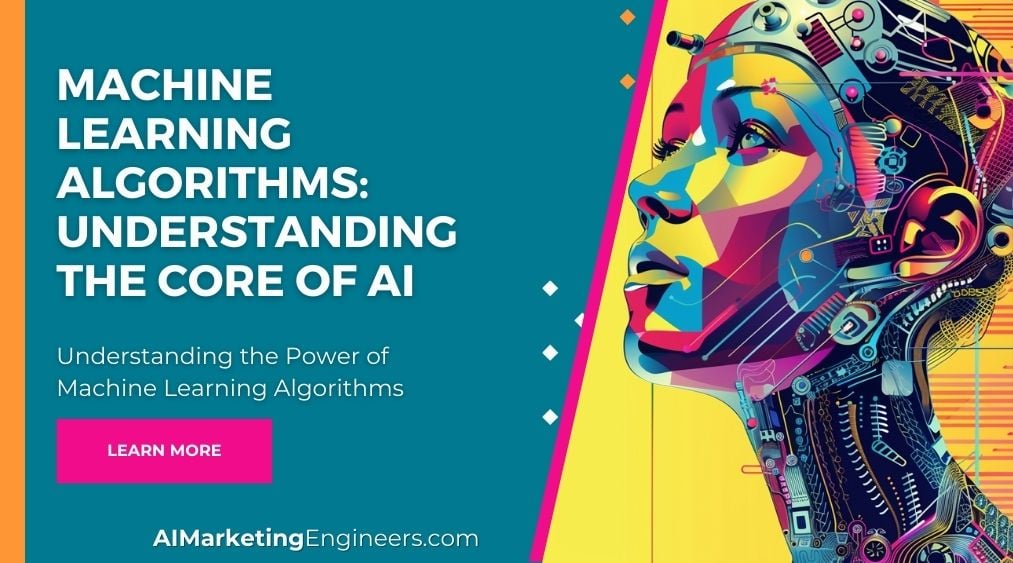
Understanding Machine Learning: The Core of AI Explained (A Beginner’s Guide)
In an increasingly data-driven world, Artificial Intelligence (AI) has moved from science fiction to everyday reality. From personalized recommendations on streaming services to self-driving cars, AI is transforming how we live, work, and interact. But at the very heart of this revolution lies a powerful technology that allows computers to learn without being explicitly programmed: Machine Learning (ML).
This comprehensive guide will demystify Machine Learning, explaining its fundamental concepts in an easy-to-understand language. Whether you’re a student, a curious professional, or just someone looking to grasp the essence of AI, you’ve come to the right place.
What Exactly is Machine Learning?
Imagine teaching a child to recognize a cat. You don’t give them a list of rules like "if it has pointy ears, whiskers, and says ‘meow,’ it’s a cat." Instead, you show them many pictures of cats, point to them, and say "cat." You also show them pictures of dogs, birds, and other animals, saying "not a cat." Over time, the child learns to identify a cat on their own, even if they’ve never seen that specific cat before.
Machine Learning works in a very similar way. Instead of explicit, step-by-step instructions for every possible scenario, we feed a computer program (an "algorithm") a vast amount of data. The algorithm then analyzes this data, learns patterns, and uses those patterns to make predictions or decisions on new, unseen data.
In essence, Machine Learning is about enabling computers to:
- Learn from data: Identify trends, patterns, and relationships within datasets.
- Improve over time: The more data they process, the better their performance becomes.
- Make predictions or decisions: Apply what they’ve learned to new situations.
This ability to "learn" is what makes ML the engine behind most of the AI advancements we see today.
Why is Machine Learning So Important?
Machine Learning isn’t just a fancy academic concept; it’s a practical solution to many real-world problems that are too complex or too vast for traditional programming methods.
Here’s why ML is so crucial:
- Handling Big Data: We generate colossal amounts of data daily. ML algorithms can process and derive insights from this "big data" far more efficiently than humans ever could.
- Automating Complex Tasks: From identifying fraudulent transactions to diagnosing diseases, ML automates tasks that require pattern recognition and decision-making, often with higher accuracy and speed than humans.
- Personalization: It powers the recommendation engines that suggest movies, products, or news articles tailored specifically to your preferences.
- Solving Unforeseen Problems: Traditional programming requires you to anticipate every possible input and outcome. ML, however, can adapt and learn from new data, allowing it to tackle problems where the rules aren’t perfectly clear or constantly changing.
- Driving Innovation: ML is at the forefront of breakthroughs in fields like medicine, robotics, environmental science, and more, pushing the boundaries of what’s possible.
The Three Main Types of Machine Learning
While the core idea of learning from data remains constant, Machine Learning is broadly categorized into three main types, each suited for different kinds of problems and data.
1. Supervised Learning
Concept: Imagine you have a teacher who guides your learning. In Supervised Learning, the algorithm learns from labeled data. This means the data you feed it already has the "answers" or correct outputs associated with each input.
How it works:
- You provide the algorithm with a dataset where each example has both the input (e.g., an image of a cat) and the desired output (e.g., "cat").
- The algorithm learns to map the inputs to the correct outputs.
- Once trained, it can predict the output for new, unseen inputs.
Common Applications:
- Image Classification: Identifying objects in images (e.g., "Is this a dog or a cat?").
- Spam Detection: Classifying emails as "spam" or "not spam."
- Price Prediction: Estimating house prices based on features like size, location, and number of rooms.
- Medical Diagnosis: Predicting the likelihood of a disease based on patient symptoms and test results.
Two Main Sub-categories of Supervised Learning:
- Classification: Predicting a categorical label (e.g., "yes/no," "spam/not spam," "cat/dog/bird").
- Regression: Predicting a continuous numerical value (e.g., "temperature," "price," "age").
2. Unsupervised Learning
Concept: Now, imagine you’re given a box full of mixed toys – blocks, cars, dolls – but with no labels or instructions. Your task is to sort them into meaningful groups. This is similar to Unsupervised Learning, where the algorithm works with unlabeled data and tries to find hidden patterns, structures, or relationships within it on its own.
How it works:
- You provide the algorithm with a dataset without any predefined outputs or categories.
- The algorithm identifies inherent structures, similarities, or anomalies in the data.
- It groups similar data points together or reduces the complexity of the data.
Common Applications:
- Customer Segmentation: Grouping customers into different segments based on their purchasing behavior, without being told beforehand what those segments are.
- Anomaly Detection: Identifying unusual patterns that might indicate fraud, network intrusion, or defective products.
- Topic Modeling: Discovering hidden topics in a collection of text documents.
- Data Compression: Reducing the number of features in a dataset while retaining important information.
3. Reinforcement Learning
Concept: Think of teaching a dog new tricks. You don’t give it a full set of instructions. Instead, you reward desired behaviors (e.g., giving a treat when it sits) and provide no reward (or even a gentle correction) for undesired ones. The dog learns through trial and error, aiming to maximize its rewards.
How it works:
- An "agent" (the ML model) interacts with an "environment" (the problem space).
- The agent performs "actions" within the environment.
- Based on these actions, it receives "rewards" (for good actions) or "penalties" (for bad actions).
- The agent’s goal is to learn a "policy" – a set of rules – that maximizes its cumulative reward over time.
Common Applications:
- Robotics: Teaching robots to walk, navigate, or perform complex tasks.
- Game AI: Creating AI players that can learn to beat human champions in complex games like Chess, Go, or StarCraft.
- Autonomous Driving: Training self-driving cars to make decisions in real-time traffic situations.
- Resource Management: Optimizing energy consumption in data centers.
How Does Machine Learning Work? The Basic Steps
While the specific algorithms can be incredibly complex, the general workflow of a Machine Learning project follows a series of logical steps:
-
Data Collection and Preparation:
- Gather Data: The first step is to collect relevant data. The more data, and the higher its quality, the better the model will perform.
- Clean Data: Real-world data is often messy. This involves handling missing values, correcting errors, removing duplicates, and dealing with inconsistencies.
- Feature Engineering: This crucial step involves selecting and transforming raw data into "features" that the ML model can understand and learn from. For example, from a birthdate, you might engineer a "age" feature.
-
Choosing a Model (Algorithm):
- Based on the problem type (classification, regression, clustering, etc.) and the nature of your data, you select an appropriate ML algorithm (e.g., Linear Regression, Decision Trees, Support Vector Machines, Neural Networks).
-
Training the Model:
- The prepared data is split into two main sets: a training set and a testing set.
- The algorithm is fed the training data. During this phase, the model "learns" by adjusting its internal parameters to find patterns and relationships within the data. This is where the "learning" happens.
-
Evaluation:
- Once trained, the model’s performance is assessed using the testing set (data it has never seen before).
- Metrics like accuracy, precision, recall, and F1-score are used to determine how well the model generalizes to new data. If the model performs poorly, you might go back to step 1, 2, or 3.
-
Prediction/Deployment:
- If the model’s performance is satisfactory, it’s ready to be deployed.
- The trained model can now take new, unseen data as input and make predictions or decisions in the real world.
Machine Learning vs. Deep Learning vs. AI: What’s the Difference?
These terms are often used interchangeably, but they represent distinct concepts with a hierarchical relationship:
-
Artificial Intelligence (AI): This is the broadest concept. AI is the overarching field that aims to create machines that can perform tasks that typically require human intelligence. This includes problem-solving, learning, understanding language, visual perception, and decision-making. Machine Learning is a subset of AI.
-
Machine Learning (ML): This is a specific approach within AI that enables systems to learn from data without being explicitly programmed. It’s about developing algorithms that can adapt and improve over time based on the data they are fed. Deep Learning is a subset of Machine Learning.
-
Deep Learning (DL): This is a specialized subfield of Machine Learning that uses artificial neural networks with multiple "layers" (hence "deep"). Inspired by the structure of the human brain, deep learning models can automatically learn complex patterns from raw data, often outperforming traditional ML algorithms in tasks like image recognition, speech recognition, and natural language processing.
Think of it this way:
- AI is the entire cake.
- Machine Learning is a slice of that cake.
- Deep Learning is a very specific kind of frosting on that slice, made with a special recipe (neural networks).
Real-World Applications of Machine Learning
Machine Learning is already deeply integrated into countless aspects of our daily lives. Here are just a few prominent examples:
- Personalized Recommendations:
- Netflix, Amazon, Spotify: ML algorithms analyze your past viewing/purchasing/listening habits and those of similar users to suggest new content or products you might like.
- Spam Filtering & Cybersecurity:
- Email Providers: ML models analyze patterns in emails to identify and filter out spam, phishing attempts, and malicious content.
- Antivirus Software: Detects new and evolving threats by recognizing suspicious code patterns.
- Medical Diagnosis & Drug Discovery:
- Disease Detection: ML can analyze medical images (X-rays, MRIs) or patient data to help diagnose diseases like cancer or diabetes earlier and more accurately.
- Drug Research: Accelerates the discovery of new drugs by predicting how molecules will interact.
- Self-Driving Cars:
- Perception: ML algorithms interpret sensor data (cameras, radar, lidar) to understand the surrounding environment, identify pedestrians, other vehicles, and traffic signs.
- Decision Making: Predicts the actions of other road users and makes real-time driving decisions.
- Natural Language Processing (NLP):
- Voice Assistants (Siri, Alexa): Convert spoken language into text, understand its meaning, and respond appropriately.
- Machine Translation (Google Translate): Translate text or speech from one language to another.
- Sentiment Analysis: Determine the emotional tone of text (e.g., positive, negative, neutral reviews).
- Fraud Detection:
- Banks & Credit Card Companies: ML models monitor transactions in real-time to identify unusual patterns that might indicate fraudulent activity, blocking transactions before they cause financial loss.
- Financial Trading:
- Algorithmic Trading: ML can analyze market data to predict stock price movements and execute trades automatically.
Challenges and Considerations in Machine Learning
While powerful, Machine Learning isn’t without its challenges and ethical considerations:
- Data Quality is Paramount: "Garbage in, garbage out." If the training data is biased, incomplete, or inaccurate, the model will learn those flaws and produce unreliable or unfair results.
- Bias and Fairness: ML models can inadvertently perpetuate or even amplify existing societal biases present in the training data. For example, a facial recognition system trained predominantly on light-skinned faces might perform poorly on darker skin tones. Ensuring fairness and mitigating bias is a major research area.
- Interpretability (The "Black Box" Problem): Especially with complex Deep Learning models, it can be difficult to understand why a model made a particular decision. This "black box" nature can be problematic in critical applications like healthcare or finance, where transparency is crucial.
- Computational Resources: Training large ML models, especially deep learning ones, requires significant computational power and large amounts of data, which can be expensive and energy-intensive.
- Ethical Implications: The widespread adoption of ML raises important ethical questions about privacy, job displacement, autonomous decision-making, and accountability.
The Future of Machine Learning
The field of Machine Learning is evolving at an astonishing pace. We can expect to see:
- Even More Pervasive Integration: ML will become an invisible backbone for even more services and industries, from smart cities to personalized education.
- Greater Accessibility: Tools and platforms will make it easier for non-experts to develop and deploy ML solutions.
- Improved Explainability: Research will continue to focus on making ML models more transparent and interpretable.
- Focus on Responsible AI: More emphasis will be placed on developing ethical, fair, and robust AI systems that benefit humanity without causing unintended harm.
- Breakthroughs in Specialized Areas: Continued advancements in areas like reinforcement learning, federated learning (learning from decentralized data), and generative AI (creating new content like images or text).
Conclusion
Machine Learning is not just a buzzword; it’s the fundamental engine driving the AI revolution. By understanding its core principles – how algorithms learn from data, the different types of learning (supervised, unsupervised, reinforcement), and the basic workflow – you gain valuable insight into the technology shaping our future.
While the journey into Machine Learning can be complex, its essence is simple: empowering machines to learn, adapt, and improve, unlocking unprecedented possibilities for innovation and problem-solving across every facet of our lives. As ML continues to evolve, a basic understanding of its mechanisms will be increasingly vital for navigating and contributing to the modern world.



Post Comment